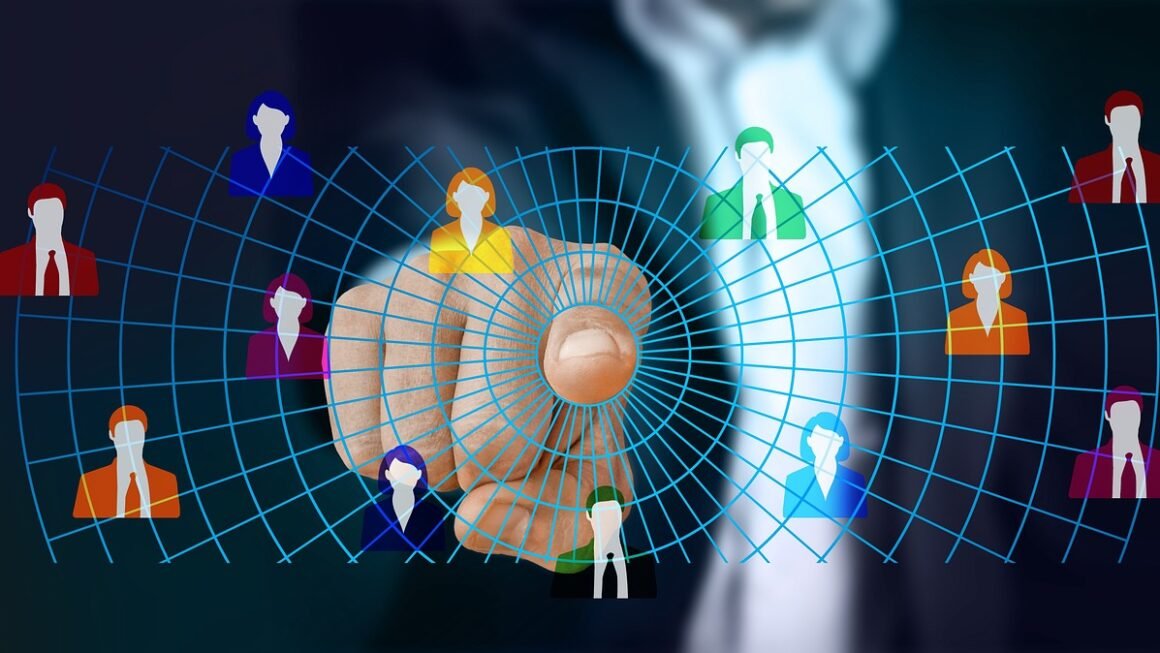Deep learning, a revolutionary subset of artificial intelligence, is reshaping industries from healthcare to finance and beyond. By mimicking the intricate structure and function of the human brain, deep learning algorithms are capable of analyzing vast amounts of data and uncovering complex patterns that were once impossible for traditional machine learning techniques to identify. This allows for unprecedented levels of accuracy in tasks like image recognition, natural language processing, and predictive modeling, making deep learning a crucial tool for businesses and researchers alike.
What is Deep Learning?
The Essence of Neural Networks
Deep learning relies on artificial neural networks (ANNs), which are composed of interconnected nodes or “neurons” organized in layers. These networks are designed to learn from data by adjusting the connections (weights) between neurons, enabling them to recognize patterns and make predictions. The “deep” in deep learning refers to the multiple layers within these networks, often numbering dozens or even hundreds, which allow for the extraction of increasingly abstract and complex features from the input data.
Key Differences from Traditional Machine Learning
While deep learning is a subset of machine learning, there are crucial distinctions. Traditional machine learning algorithms often require manual feature engineering, where human experts identify and extract relevant features from the data. Deep learning algorithms, on the other hand, can automatically learn these features from raw data, eliminating the need for manual intervention. This is particularly advantageous when dealing with unstructured data like images, audio, and text. Moreover, deep learning typically requires a much larger dataset to achieve optimal performance compared to traditional machine learning.
Benefits of Deep Learning
- Automatic Feature Extraction: Learns relevant features from raw data, reducing the need for manual engineering.
- High Accuracy: Achieves state-of-the-art accuracy in various tasks.
- Handling Complex Data: Excels at processing unstructured data such as images, audio, and text.
- Scalability: Can handle large datasets, improving accuracy with more data.
- Adaptability: Capable of learning and adapting to new data and tasks.
Core Components of Deep Learning
Layers and Activation Functions
Neural networks consist of interconnected layers of neurons. The input layer receives the initial data, followed by one or more hidden layers where the actual learning takes place, and finally, the output layer produces the results. Each neuron in a layer receives inputs from the neurons in the previous layer, applies a weight to each input, sums the weighted inputs, and then applies an activation function. Activation functions introduce non-linearity into the network, allowing it to learn complex relationships. Common activation functions include ReLU (Rectified Linear Unit), sigmoid, and tanh.
Training Deep Learning Models
Training a deep learning model involves feeding it labeled data and adjusting the weights of the connections between neurons to minimize the difference between the predicted output and the actual output. This process is typically done using optimization algorithms like stochastic gradient descent (SGD) or its variants, such as Adam. Backpropagation is used to calculate the gradients of the loss function with respect to the weights, allowing the optimization algorithm to update the weights in the direction that minimizes the loss. Hyperparameter tuning, such as learning rate and batch size, plays a significant role in the training process.
Common Deep Learning Architectures
- Convolutional Neural Networks (CNNs): Primarily used for image recognition and processing. CNNs use convolutional layers to extract spatial features from images. A practical example is identifying objects in self-driving car camera feeds.
- Recurrent Neural Networks (RNNs): Designed for processing sequential data, such as text and time series. RNNs have feedback connections that allow them to maintain a memory of past inputs. An example application is language translation.
- Transformers: A more recent architecture that has revolutionized natural language processing. Transformers rely on attention mechanisms to weigh the importance of different parts of the input sequence. Examples include language models like BERT and GPT.
- Generative Adversarial Networks (GANs): Consist of two networks, a generator and a discriminator, that are trained in competition. GANs are used for generating new data samples that resemble the training data. Applications include image generation and data augmentation.
Applications of Deep Learning Across Industries
Healthcare
Deep learning is transforming healthcare through applications such as:
- Medical Image Analysis: Diagnosing diseases from X-rays, MRIs, and CT scans.
Example: Identifying cancerous tumors with high accuracy.
- Drug Discovery: Accelerating the process of identifying and developing new drugs.
Example: Predicting the efficacy of drug candidates.
- Personalized Medicine: Tailoring treatments to individual patients based on their genetic and clinical data.
Example: Predicting patient response to specific medications.
Finance
In the financial sector, deep learning is used for:
- Fraud Detection: Identifying fraudulent transactions in real-time.
Example: Detecting unusual patterns in credit card transactions.
- Algorithmic Trading: Developing automated trading strategies.
Example: Predicting stock price movements.
- Risk Management: Assessing and managing financial risks.
Example: Predicting loan defaults.
Retail
Retail companies leverage deep learning for:
- Recommendation Systems: Providing personalized product recommendations.
Example: Suggesting products based on browsing history and purchase patterns.
- Inventory Management: Optimizing inventory levels to meet demand.
Example: Predicting product demand based on seasonal trends.
- Customer Segmentation: Identifying different customer segments to tailor marketing campaigns.
Example: Grouping customers based on their demographics and purchasing behavior.
Autonomous Vehicles
Deep learning is essential for enabling autonomous vehicles through:
- Object Detection: Identifying and classifying objects in the vehicle’s surroundings.
Example: Detecting pedestrians, vehicles, and traffic signs.
- Lane Keeping: Maintaining the vehicle’s position within its lane.
Example: Steering the vehicle based on lane markings.
- Path Planning: Planning the optimal route for the vehicle to reach its destination.
Example: Navigating through complex urban environments.
Tools and Frameworks for Deep Learning
Popular Deep Learning Libraries
Several powerful deep learning libraries are available, offering a wide range of functionalities and ease of use.
- TensorFlow: An open-source library developed by Google, widely used in both research and industry.
Benefits: Flexible, scalable, and supports distributed training.
- PyTorch: Another popular open-source library developed by Facebook, known for its dynamic computation graph and ease of debugging.
Benefits: Easy to use, supports rapid prototyping, and is popular in research.
- Keras: A high-level API that simplifies the development of deep learning models.
Benefits: User-friendly, supports multiple backends (TensorFlow, PyTorch), and allows for rapid prototyping.
Hardware Considerations
Deep learning models are computationally intensive and often require specialized hardware to train effectively.
- GPUs (Graphics Processing Units): GPUs are well-suited for deep learning tasks due to their parallel processing capabilities.
- TPUs (Tensor Processing Units): TPUs are custom-designed accelerators developed by Google specifically for deep learning.
- Cloud Computing Platforms: Cloud platforms like AWS, Google Cloud, and Azure offer access to powerful hardware and scalable infrastructure for training and deploying deep learning models.
Example: Building a Simple Image Classifier with Keras
Here’s a basic example of building an image classifier using Keras with TensorFlow backend:
“`python
from tensorflow import keras
from tensorflow.keras import layers
# Define the model
model = keras.Sequential([
layers.Conv2D(32, (3, 3), activation=’relu’, input_shape=(28, 28, 1)),
layers.MaxPooling2D((2, 2)),
layers.Flatten(),
layers.Dense(10, activation=’softmax’)
])
# Compile the model
model.compile(optimizer=’adam’,
loss=’categorical_crossentropy’,
metrics=[‘accuracy’])
# Load the MNIST dataset
(x_train, y_train), (x_test, y_test) = keras.datasets.mnist.load_data()
# Preprocess the data
x_train = x_train.astype(‘float32’) / 255.0
x_test = x_test.astype(‘float32’) / 255.0
x_train = x_train.reshape(-1, 28, 28, 1)
x_test = x_test.reshape(-1, 28, 28, 1)
y_train = keras.utils.to_categorical(y_train, num_classes=10)
y_test = keras.utils.to_categorical(y_test, num_classes=10)
# Train the model
model.fit(x_train, y_train, epochs=2, batch_size=32)
# Evaluate the model
loss, accuracy = model.evaluate(x_test, y_test)
print(‘Accuracy: %.2f’ % (accuracy100))
“`
This code snippet demonstrates a simple CNN for classifying handwritten digits from the MNIST dataset.
Challenges and Future Directions
Data Requirements and Availability
Deep learning models require large amounts of labeled data to train effectively. Obtaining and labeling such data can be a significant challenge, especially in domains where data is scarce or expensive to acquire. Techniques like transfer learning, data augmentation, and semi-supervised learning can help mitigate this issue.
Interpretability and Explainability
Deep learning models are often considered “black boxes” due to their complexity and lack of transparency. Understanding why a deep learning model makes a particular prediction can be challenging, which can limit its adoption in critical applications where interpretability is crucial. Research into explainable AI (XAI) is focused on developing techniques to make deep learning models more transparent and understandable.
Computational Resources and Scalability
Training deep learning models can be computationally expensive, requiring significant hardware resources and time. Scaling deep learning models to handle larger datasets and more complex tasks can be a challenge. Distributed training, model parallelism, and hardware acceleration are techniques used to address this issue.
Future Trends
The field of deep learning is constantly evolving, with new architectures, algorithms, and applications emerging rapidly. Some of the key future trends include:
- Self-Supervised Learning: Training models without labeled data.
- Federated Learning: Training models on decentralized data sources.
- Neuromorphic Computing: Developing hardware inspired by the human brain.
- AI Ethics: Addressing the ethical implications of deep learning.
Conclusion
Deep learning is a powerful and versatile technology that is transforming various industries. While challenges remain regarding data requirements, interpretability, and computational resources, ongoing research and development are addressing these issues. By understanding the fundamentals of deep learning, its applications, and the available tools and frameworks, businesses and researchers can leverage its potential to solve complex problems and drive innovation. The future of deep learning is bright, promising even more breakthroughs in the years to come, particularly as we find ways to make these models more accessible, understandable, and ethically sound.



